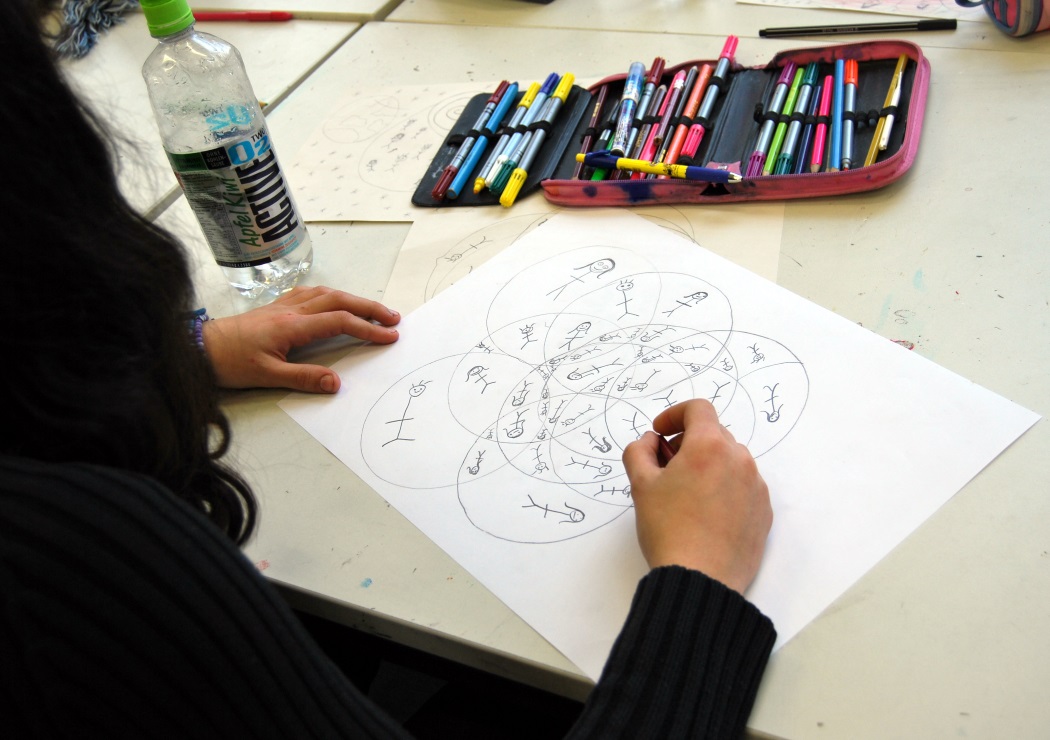I, You and the World / Ich, Du und die Welt / eu, tu și lumea
art project on identity, social creativity and integration
realized in Katholische Hauptschule Bülowstr. Köln, a school with a high percentage of immigrant students, 2009-2011
concept and development: Dana Fabini; realization and organisation: Letitia Gaba
exhibition opened on 07 May 2009 and on 20 January 2011, Magistrale des Schulamtes der Stadt Köln; opening speech by Marlis Sauer (director Jugendartgalerie Köln) and Monika Janssen (director Schulamt Köln)
press report e.g.: Kölner Stadt-Anzeiger 14.05.2009, 03.03.2011; Kölner Wochenspiegel 13.05.2009, 15.03.2011
the project is presented in an art book with the same name (copyright Dana Fabini and Letitia Gaba, edition by the artist, 2010) ; it proposes practical methods of understanding the individuality within the community as an ideal of the educational system
photo by Letitia Gaba

"One myth is that only special people are creative. This is not true. Everyone is born with tremendous capacities for creativity. The trick is to develop these capacities. (...) When people say they're not creative, it's often because they don't know what's involved or how creativity works in practice. Another myth is that creativity is about special activities. It's about "creative domains" like the arts, design, or advertising. These often do involve a high level of creativity. But so can science, math, engineering, running a business, being an athlete, or getting in or out of a relationship. The fact is you can be creative at anything at all - anything that involves your intelligence. The third myth is that people are either creative or they're not. This myth suggests that creativity, like IQ, is an allegedly fixed trait, like eye color, and that you can't do much about it. In truth, it's entirely possible to become more creative in your work and in your life."
by Ken Robinson with Lou Aronica, The Element. How finding your passion changes everything, published by Allen Lane, Penguin Books, 2009, page 56-57
"Creativity is not a purely personnal process. Many creative processes draw from the ideas and stimulation of other people. Creativity flourishes in an atmosphere where original thinking and innovation are encouraged and stimulated. It fades in atmospheres where dialogue and interaction are stifled. Cultural conditions can stifle and kill creativity. If ideas are not encouraged, or when encouraged they are ignored, the creative impulse does one of two things. It goes out, or it goes maverick. It deserts the organisation or it subverts it. Creativity can work for you or against you."
by Ken Robinson, Out of our minds. Learning to be creative, Capstone Publishing Ltd., Great Britain, 2001, page 181-182
